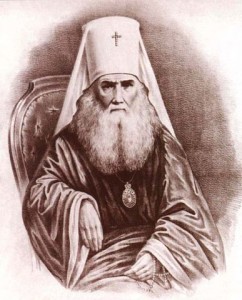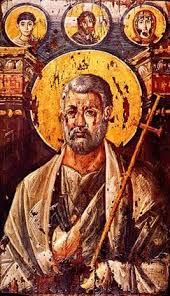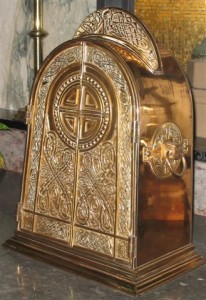(February 9th)
 At the end of St. Matthew’s Gospel, before He ascends to heaven, Jesus Christ says: “Go therefore and make disciples of all nations, baptizing them in the name of the Father and of the Son and of the Holy Spirit, teaching them to observe all that I have commanded you; and lo, I am with you always, to the close of the age.” (Mt 28:19-20) All nations – in other words Christ is telling us that Christianity is not only for certain nations or certain nationalities, but for all people. So we see today that Orthodoxy is growing in Africa, in Latin America, in Asia, including China. Recently a Chinese man was ordained as an Orthodox priest for the first time in sixty years, and there are other signs of the rebirth of the Orthodox Church in China.
At the end of St. Matthew’s Gospel, before He ascends to heaven, Jesus Christ says: “Go therefore and make disciples of all nations, baptizing them in the name of the Father and of the Son and of the Holy Spirit, teaching them to observe all that I have commanded you; and lo, I am with you always, to the close of the age.” (Mt 28:19-20) All nations – in other words Christ is telling us that Christianity is not only for certain nations or certain nationalities, but for all people. So we see today that Orthodoxy is growing in Africa, in Latin America, in Asia, including China. Recently a Chinese man was ordained as an Orthodox priest for the first time in sixty years, and there are other signs of the rebirth of the Orthodox Church in China.
The saint we are commemorating today, Saint Innocent of Irkutsk, was supposed to be the first bishop of the Orthodox Church in China, although things did not go as planned. The Russian Ecclesiastical Mission in Beijing was officially founded in 1715 by a command of Tsar Peter the Great, although there was an Orthodox presence even before that. Saint Innocent was born in 1680 and educated at the Kiev Theological Academy and ordained as a hieromonk. He held several important posts in Russia, then was consecrated a bishop in 1719 and appointed to the Russian Ecclesiastical Mission in Beijing. He made the long journey to China, but due to political factors the Chinese government would not let him in. He spent three years in very difficult conditions on the Chinese border. Finally the China plan was abandoned and the Holy Synod appointed Saint Innocent the bishop of the diocese of Irkutsk. Saint Innocent’s diocese was an ethnically mixed one, having for example Buryats and Mongols. It was a poor diocese and Saint Innocent labored with very little financial support. Nevertheless, he was tireless in building up Orthodoxy in that diocese bringing the Gospel of Christ to the very diverse members of his diocese, as well as building schools and churches. He died at the age of 51 in 1731. Years after his death his relics were found uncorrupt and many miracles occurred after people prayed to him. He was canonized by the Russian Orthodox Church in 1800. In 1921 the relics of Saint Innocent were seized by the Soviets and returned in 1990 to the cathedral in Irkutsk.
Fr. John


